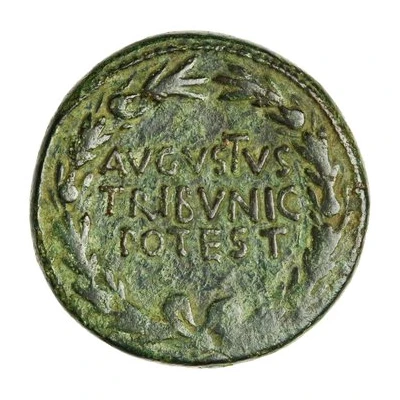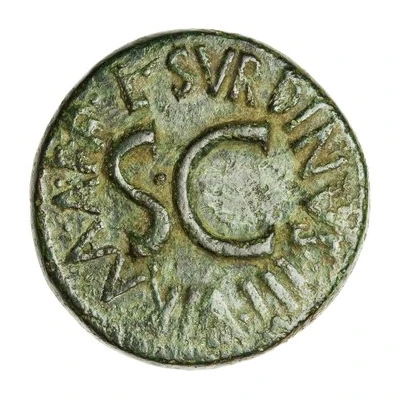


© American Numismatic Society (ANS)
Dupondius L SVRDINVS IIIVIR A A A F F S C 15 BC
15 BC year| Bronze | 9.6 g | 26 mm |
| Issuer | Rome › Roman Empire (27 BC - 395 AD) |
|---|---|
| Emperor | Augustus (Caius Octavius) (27 BC - 14 AD) |
| Type | Standard circulation coin |
| Year | 15 BC |
| Value | 1 Dupondius = ⅛ Denarius |
| Currency | Denarius, Reform of Augustus (27 BC – AD 215) |
| Composition | Bronze |
| Weight | 9.6 g |
| Diameter | 26 mm |
| Shape | Round (irregular) |
| Technique | Hammered |
| Demonetized | Yes |
| Updated | 2024-10-06 |
| Numista | N#247865 |
|---|---|
| Rarity index | 97% |
Reverse
Legend surrounding S C.
Script: Latin
Lettering:
L SVRDINVS IIIVIR A A A F F
S C
Translation:
Lucius Surdinus Triumvir Auro, Argento, Aere, Flando, Feriundo. Senatus Consultum.
Lucius [Naevius] Surdinus, moneyer (Triumvir Monetalis) for the casting and striking of gold, silver, and bronze coins. Decree of the senate.
Comment
Mass varies: 6.341–15.13 g;Diameter varies: 24–29 mm;
Source: Online Coins of the Roman Empire (OCRE)
Interesting fact
The Dupondius coin from Rome, minted in 15 BC, features an interesting fact: it has a unique combination of letters and symbols on its reverse side. The letters "L," "S," "V," "R," "D," "I," "N," "U," "S," and "F" are arranged in a specific order, along with a few symbols, such as a crescent moon, a star, and a flower. This combination is known as the "Senatorial Letters" and was used to indicate the coin's denomination and authenticity. It's a distinctive feature of this particular coin and a fascinating aspect of ancient Roman numismatics.



